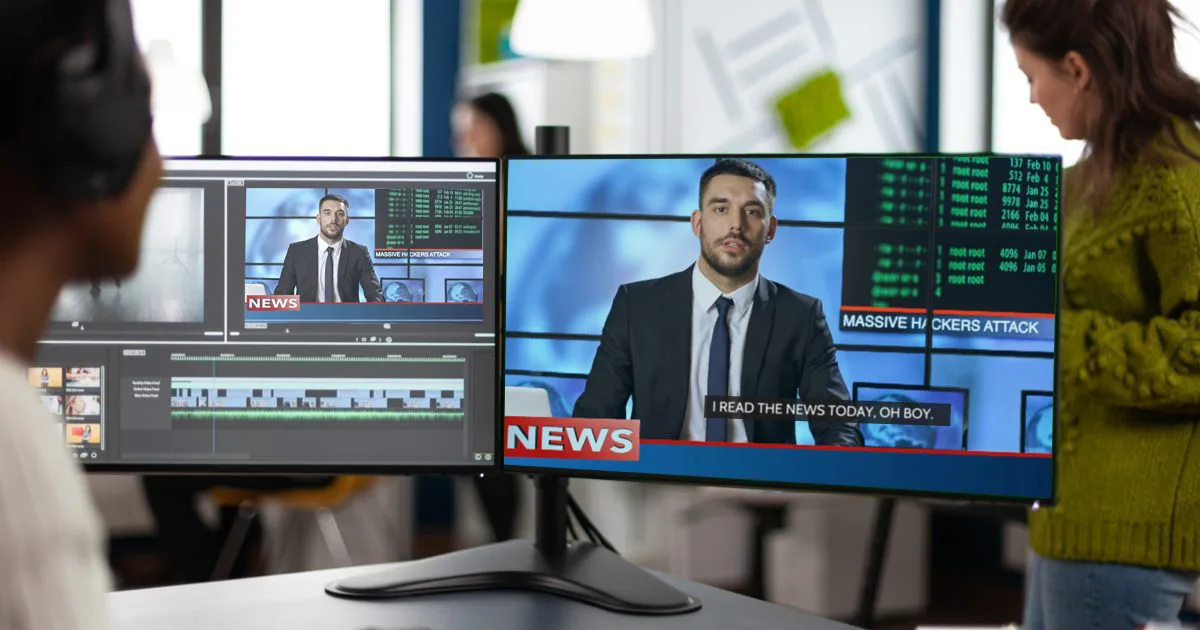Transcriptionist vs Captioner — What Are the Differences?

When it comes to the role of a transcriptionist vs captioner, both professionals are involved in transcribing audio into text. However, the roles are more nuanced than that since transcripts and captions have different uses, advantages and legal requirements. We will delve into the differences in transcripts, captions and the people who create them below.
Transcriptionist vs Captioner
Transcriptionists and captioners capture audio and human speech. However, there are some important differences between transcriptionists and captioners. Captions are typically used for television, video and social media. They are time-coded to appear and disappear on the screen based on the dialogue or other important sounds. Therefore, a captioner will have to create a file to be played alongside or embedded into the video. It is most commonly an SRT or VTT file.
Transcriptions are not timecoded, therefore users are not able to follow along in the same way they would with closed captioning services. However, they are one of the best ways to make seminars, podcasts and other audio-heavy content more accessible when closed captioning would not be appropriate. A transcriptionist would create a written document.
What Is a Captioner?
The role of a closed captioner is to create on-screen text with the goal of recreating all audio and speech of a particular program or video. Non-speech audio is also included to improve comprehension for anyone who is hard of hearing or who can’t hear environmental sounds.
This niche profession looks different for everyone. Some captioners use stenographs, while others use speech-to-text computer software and then edit the text. A captioner might also be required to embed captions into specific video formats. So, you’ll have to have some technical fluency. Discuss workflows and what is expected from a captioner with any potential employers.
In many cases, captions are legally mandated. At least in Canada, broadcast standards require 100% of programs to be captioned with CRTC standards over the course of the broadcast day.
Therefore, the captioner must understand and adhere to these standards.
What Is a Transcriptionist?
As we know, the role of a transcriptionist is to listen to audio recordings and transform them into written documents. However, unlike a closed captioner who will almost always include environmental sounds in their text files, what is included in transcriptionist documents will vary based on the job.
These include verbatim, intelligent verbatim and edited transcriptions. The names of these types of transcriptions may vary across the industry but their meanings remain the same.
Verbatim transcripts will include everything that is spoken without paraphrasing or changes for clarity. A transcriptionist will include filler words like um, like and human noises like coughs. Intelligent verbatim will clean up the copy without filler words, rambling sentences and more so that the content is clear while still staying true to who was speaking.
Edited transcription would be the most punctually concise written document. It will clean up all spoken grammatical errors, update style and more to create a formalized, accurate script. It would be most likely to be used in business settings.
Others Types of Accessibility Media
There is so much more to accessibility than just transcripts and captioning. As our industry evolves, there have become more ways to make media accessible.
Communication Access Realtime Translation (CART): CART software allows hard-of-hearing people to participate in group discussions, meetings and seminars by providing speech-to-text translation faster than any other captioning system.
Live Closed Captioning: Offers real-time captioning for live news, sports and entertainment events.
Described Video: Described video allows blind and partially sighted communities to form a mental picture of a video or tv show. Narrative snippets are added between the natural dialogue to describe environmental sounds, physical actions, facial expressions, clothing and more to improve comprehension.
Subtitling: Subtitles provide text dialogue and are intended for foreign language speakers or those who can hear the audio but can not understand it. Subtitles do not generally include other verbatim sounds in the same way that closed captioning does.
Media should be made accessible so that it is available and understood by the widest possible audience. Working in this industry is fast-paced and rewarding. However, if you would rather have someone take on your company’s accessibility media, get in touch with our team today.
From broadcast television to online, CCS is Canada’s frontrunner in full-spectrum media accessibility, providing closed captioning and descriptive video services for broadcasters, producers, educators, governments, ISPs, production houses, and more.
Last updated: April 01, 2022

Ian Morrison
Ian is an experienced software developer and digital media entrepreneur, bringing over 20 years of experience in web application development. His own hearing impairment led him to advocate for web accessibility, now consulting with ScribeWire on AODA & WCAG compliance.
We want to hear from you.
Request a quote, or just let us know how we can make your media accessible.
